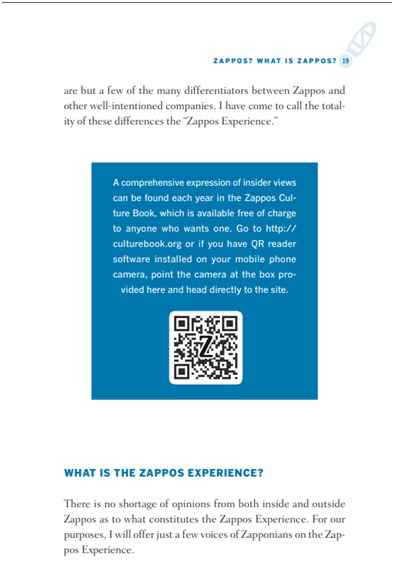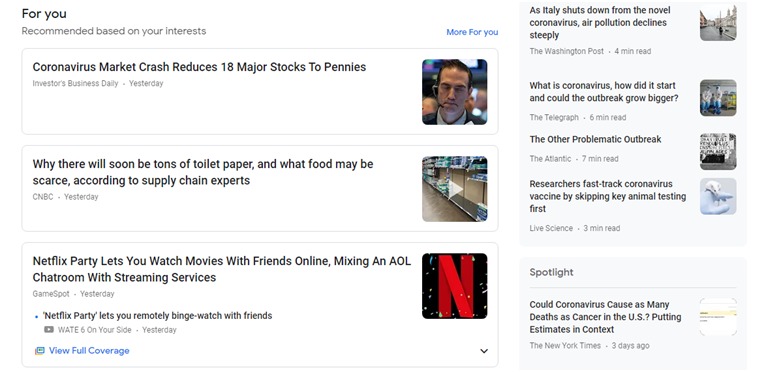
By now, everyone is aware of the new COVID-19.
The emergence of the new virus has affected numerous industries so far. Digital publishing is no exception.
According to recent studies, 68% of users search for COVID-19 related news on the internet, making it the most prominent online activity.
Digital publishers have responded to the new trend, changing their content calendars and devoting their resources to covering coronavirus topics.
While challenging, they have managed to keep up with this new global content consumption, offering exceptional pieces of content despite the struggle.
Soon, COVID-19 will hopefully become a distant memory, and publishers will have to get back on track.
To get your mind off the new virus, we’re going to see ahead and plan for the future.
As a digital publisher, you need to predict your readers’ behavior and come up with solutions to tackle issues like finding new subscribers and preventing customer churn.
Since pirated content is on the rise, subscription fatigue is a reality for many digital publishers regardless of reputation.
Here are the best digital publishing trends you need to keep up with to stay on top.
1. People Want Information Delivered To Them
Digital channels have shaped the way people receive and interact with content. Now, if a reader wants to read the news, they will simply search for it online.
The amount of search engine results, though, is so significant that a potential reader is more likely to look at various sources than a single one.
What’s more, the volume of results will sometimes tire them and distract them from their initial search.
As a result, a reader looking for a specific piece of news might end up watching cat videos instead.
To avoid the number of irrelevant search engine results and distracted readers, you need to find a way to deliver your content to their devices.
For that, email and SMS have always been some of the most popular channels that people use to get in touch and receive promotional content from their favorite brands.
Email Marketing and Digital Publishing
Email is still the king of engaging consumers through fantastic email campaigns. Contrary to some people’s opinion, email is alive and well, giving businesses an amazing return-on-investment (ROI) of $55.
To get started with email marketing for publishers, you need the right tools to create and distribute your newsletter to your subscribers.
Taking advantage of the available free email marketing services will allow you to test different tools and editors and, ultimately, choose the right one.
As more and more consumers interact with their favorite stores through email, digital publishers can leverage email to minimize subscription fatigue.
Here’s an example from National Geographic that turns their story into an incredible email with a call-to-action (CTA):

SMS Marketing and Digital Publishing
Apart from using email, digital publishers have started experimenting with SMS marketing to target their subscribers with content updates.
As readers want to access different pieces of content through their devices, digital publishers will have to invest in efficient campaigns to pique their readers’ interest and engage them with their content.
As SMS is more direct and personal, digital publishers like the New York Times have used it to cover the Olympic Games in Rio creatively and innovatively.

2. The Rise of Mobile Devices
The need for accessibility has given rise to better, more advanced mobile devices that soon will be as powerful as desktops.
Now mobile accounts for half of internet use, with 92% of people already possessing a mobile device.
People’s love for mobile devices has created the need for mobile-optimized websites across different devices.
To give you an idea of how important this trend is, let’s take a look at people’s behavior regarding reading the news.
As data shows, 39% of people prefer getting their news through a tablet device instead of watching TV or reading a newspaper.
Of course, let’s not forget about commuters who will try to pass their time reading various pieces of content through their smartphones and tablets.

Judging by the results, if you are a digital publisher and haven’t thought about mobile-optimization, you might be missing out on some serious traffic.
The more people favor mobile devices, the more they need for mobile optimization will rise. Consequently, you need to consider mobile-first users more than ever, favoring mobile-friendly and responsive pages for a better reading experience.
Adopting this trend will give you the tools to boost engagement with your content and even help you remarket your audience through push notifications.
Also read: Top 25 Digital Marketing Blogs To Follow In 2024
3. Interactive Content Is A Necessity
Another thing that dominates the digital publishing landscape is the adoption of interactive content.
Print material has always been one of the most popular forms of content. According to Meryl Halls, managing director of the Booksellers’ Association, nothing can compete with the book lovers’ need to show what they’ve read. Collecting and displaying their book collections in their homes is all about showing their identity and the need to show that to the world.
While print still dominates the reading world, different digital publishers have started adopting a new approach to turn the classic ebook into the ultimate reading experience that will get even the most devoted print lovers to buy them.
By incorporating audio and video elements, digital publishers can turn a book into a fun experience that will encourage readers to keep reading.
Here’s an example from an interactive ebook created for Blooms of Bressingham:

While interactive learning isn’t something new, emerging technologies like artificial intelligence and virtual reality have found their way into digital publishing.
As readers’ love for technology grows, the desire for better ebook templates will be dire. Consequently, every digital publisher should welcome interactive content and make it part of their digital content strategy.
Here’s another example from Joseph A. Michelli’s eBook, The Zappos Experience, that uses a QR code to provide readers with further information.

Also read: Novel AI Review: Is It The Best Story Writing AI Tool? (2024 Guide)
4. Readers Will Influence Content More Than Ever
Many businesses have already adopted a more customer-centric approach, putting their customers’ needs at the center of their operations.
The same tactic has influenced the digital publishing landscape, with digital publishers starting to consider their readers’ interests and preferences more than ever.
Through questionnaires and quizzes, digital publishers have started collecting valuable information about what their audience wants to read.
The more relevant pieces of information they collect, the more they’ll know what stories they need to focus on.
As a result, digital publishers will see their content strategy change based on their readers’ needs. Big household names like the New York Times have already started leveraging demographic data to engage with their audience.
To collect information like their readers’ age, gender, and profession, the digital publisher created an online form to understand their audience and deliver more relevant content.

Collecting user data and building solid relationships with the readers will be a priority for digital publishers.
However, strict regulations regarding data collection and third-party cookie policies will still be a challenge.
5. Audio Becomes Even More Popular
Since their appearance, audiobooks have become an instant hit for millions of readers.
Their popularity stems from the fact that readers might not have enough time to read an entire book or a lengthy post.
This type of content allows readers to go “hands-free” and use their time more productively through multitasking.
However, one of the most significant benefits of audiobooks is that it gives readers visual problems the ability to enjoy their favorite content whenever they want.
As audio becomes more popular, several digital publishers have started offering audio versions of their content to respond to their readers’ need for better reading experiences and accessibility.
While not every digital publisher has considered this trend, publishers have already started turning their posts into digital audio files that readers can listen to.
Apart from that, numerous digital publishers have started using audio to give their readers short updates without going through multiple articles.
Here’s an example from The Daily:

Also read: [10 Best] Blog To Video AI Free (Without Watermark)
6. Google News Takes The Lead
Digital publishers have used social media as their primary source of referral traffic.
Since readers love to share interesting posts with their friends, it’s a no-brainer that social media is one of the best ways to increase your stories’ visibility and boost your subscription rate.
However, while social media has been a popular source of referral traffic, the introduction of Google News has changed the way publishers send traffic to their websites.

Google has always been a trustworthy source of information after establishing itself as one of the biggest companies around.
60% of internet users trust Google for news than the news outlets found in the Google index.
While social media platforms like Facebook and Twitter still reign supreme, users prefer to receive their news from trustworthy places that guarantee the legitimacy of news. Hence, the emergence of Google News gave them a safe place to discover new content.
Digital publishers should take into account their online readers’ need for a trusted reading space and rely less on social media to increase their readership.
7. Collaborations to Meet Digital Publishing Demands
In the past, the phrase “every man for himself” was prominent in the digital publishing landscape.
The rise of technology and media, and the infinite possibilities it created, gave publishers the tools to expand their target audience beyond measure.
As a result, the competition between digital publishers increased, pushing them to find new ways to deliver more engaging content.
In 2020, though, the demand for digital content has pushed digital publishers to create more engaging stories.
According to an interview with Ian Hocking, vice president of the South China Morning Post (SCMP), collaborations between digital publishers are key to enhancing efficiency and building fruitful relationships.
By exchanging valuable data and co-writing content, digital publishers have begun to produce a new type of content that leverages a multitude of sources to create informative and entertaining digital content.
As the demand for selling digital content rises, digital publishers will seek out new partnerships to increase their engagement with their readers.
The Digital Publishing Landscape Is Changing
As readers demand more personalized content, digital publishers need to embrace the new state of the digital landscape and adopt new practices to engage with them.
With the rise of technology and its applications, more new trends are bound to happen.
However, keeping up-to-date with some of the essential digital publishing trends is vital.
Now that you know about these 7 major digital publishing trends, it’s time to improve your content strategy, boost your subscriptions, and have happy readers who will support you throughout their journey.
And if you liked what you read, don’t forget to spread the love by sharing it with your peers!
Top 10 News
-
01
[10 BEST] AI Influencer Generator Apps Trending Right Now
Monday March 17, 2025
-
02
The 10 Best Companies Providing Electric Fencing For Busines...
Tuesday March 11, 2025
-
03
Top 10 Social Security Fairness Act Benefits In 2025
Wednesday March 5, 2025
-
04
Top 10 AI Infrastructure Companies In The World
Tuesday February 11, 2025
-
05
What Are Top 10 Blood Thinners To Minimize Heart Disease?
Wednesday January 22, 2025
-
06
10 Top-Rated AI Hugging Video Generator (Turn Images Into Ki...
Monday December 23, 2024
-
07
10 Top-Rated Face Swap AI Tools (Swap Photo & Video Ins...
Friday December 20, 2024
-
08
10 Exciting iPhone 16 Features You Can Try Right Now
Tuesday November 19, 2024
-
09
10 Best Anatomy Apps For Physiologist Beginners
Tuesday November 12, 2024
-
10
Top 10 Websites And Apps Like Thumbtack
Tuesday November 5, 2024







